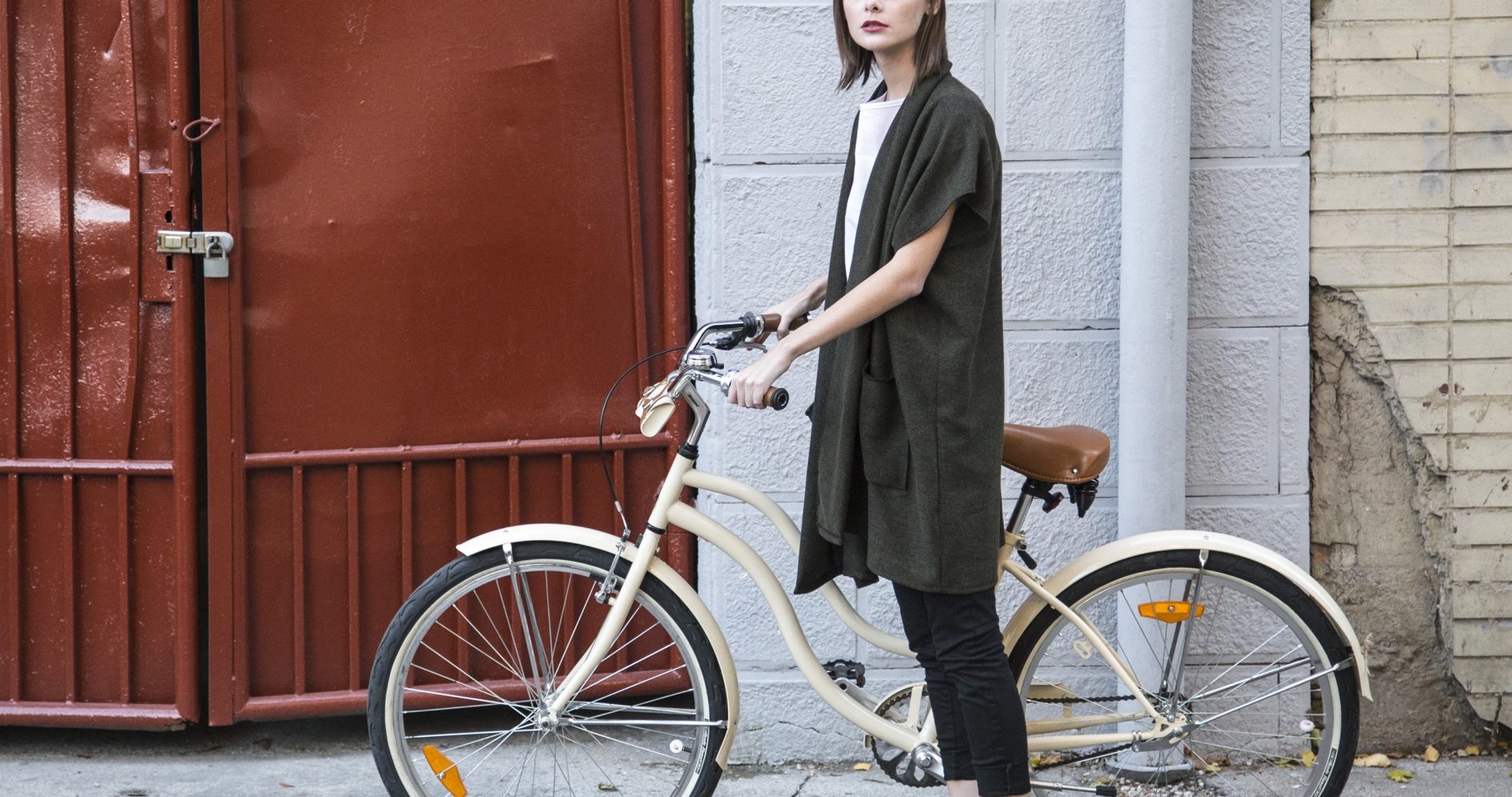Many founders in the beauty and fashion spaces mistakenly think growing a successful company is all about having a big following. They think the first step to a million dollars in revenue is having a million followers on Instagram.
That’s not the case. Some fashion entrepreneurs have garnered massive followings as a result of building a great business, rather than establishing this audience as a prerequisite.
Whether you’re building a name brand or a revolutionary piece of technology, the business model and the product always come first. But getting those right is not easy. Fashion and beauty are uniquely challenging verticals—they’re all about inspiring feeling, about capturing a sense of magic, about conveying a certain charm. You’re often not competing on traditional startup differentiators, such as cost or efficiency. You have to do things differently.
There are two particularly difficult things about building a company in these spaces that founders thinking about going into beauty and fashion urgently need to know.
You Need to Test Monetization Early
When you get 1,000,000 Instagram followers, a zillion likes on your Facebook page or tons of traffic to your blog, you get great at content and branding. The problem is that you’re merely good at what everyone else is also good at. And you’re no closer to turning that traffic into sales.
The real gap and opportunity for fashion entrepreneurs today is in figuring out how to monetize your audience. That’s one of the most powerful ways to take a business to scale because it lets you grow revenue without large increases in operating cost.
Testing monetization early—even as you continue fast growth—forces you to understand what your audience is really worth. A couple of considerations:
- Growing your following first can turn follower count into a vanity metric that encourages spammy tactics and results in low engagement from your following. Low engagement means it will be difficult to monetize your audience.
- Testing monetization forces you to build a loyal following, which is based on delivering an awesome experience and creating real value.
Curate the audience that you target from the very first day. That audience may be much smaller, but if it’s very, very active, you’ll have the foundation you need to scale. And quickly figure out the business unit metrics behind this audience so that when you turn your focus to product and sales later, you’ll already have a strong sense of what to sell.
Why Glambot Built a Product
500 Startups alum Karen Horiuchi started her company Glambot (Batch 13) around the offbeat idea of buying and selling pre-owned makeup.
Amazon and eBay had policies against preowned makeup. Craigslist and random web forums were sketchy and full of fake or unusable makeup. You can imagine that, to disrupt the supply chain by circumventing middlemen like big e-tailers and department stores to sell used makeup straight to the consumer, you would need to build a considerable social media following.

Coming out of 500, Glambot was doing over $1M in annual revenue run rate, growing 30% month over month with 60% gross margins.
Karen started by building Glambot as a separate site. When you’re building a marketplace, you can’t outsource your audience to Instagram or Facebook, because that’s at the very core of what you do. Over time, she built its reputation into that of a trusted dealer of used goods, not an easy feat for something as personal as makeup.
That she built her own marketplace and network totally separate from Instagram or Facebook is the key to her high margins and non-linear revenue growth, and it’s what makes the revenue she does have all the more valuable.
“Although an impressive following on Instagram is nice to have and gives the appearance of success,” Karen says, “what really matters is money in the bank. An e-commerce start-up needs to focus on revenue through conversion. Survive first then flaunt later.”
That attitude is precisely what’s given her a foundation for blowing past the $1M to $2M ARR ceiling that other beauty startups, built on top of the flimsier distribution, hit.
Product First
Look closely, and you’ll see that most fashion and beauty startups are really just Shopify stores. That can be a problem if the shopping experience is critical to your user experience.
The best companies in the beauty and fashion space look a lot like their fellow tech companies—they’re 100% focused and obsessive about the product because they want to deliver a unique user experience that delights customers. They:
- Build their own tech. If you have no full-time technical people on your team and you’ve outsourced your technology, how can you iterate quickly based on customer feedback to build a product that people love?
- Lead with a demo. It shows your focus is on the product, not customer acquisition, and that’s what you need to build a novel product that people will try.
In fashion and beauty, it’s in creating an original product and changing consumer behavior that you find massive opportunities, because people still buy and sell clothes pretty much the same way they did 30 years ago, and this needs to be disrupted.
Despite the rise of online shopping, most people still prefer brick-and-mortar shopping for all kinds of reasons. They like seeing clothes in person, touching them, seeing how they move and putting outfits together. The startups that win in this space incorporate that experience into their products.
How Glam Street Built on Brick-and-Mortar
Glam Street (Batch 13) cofounder Agustina Sartori started off her Demo Day presentation with a slide that explained her company’s value proposition in one image—a drugstore’s makeup aisle. “Imagine trying to find the right makeup,” she said, “In this place.”

Glam St is a B2B beauty company with a simple yet powerful product: virtual makeup try-on.
The app lets users virtually try on a number of different kinds of makeup via webcam, while Glam St’s main business model involves using brands to get that app onto huge e-commerce sites and onto tablets in the hands of in-store stylists.
Glam St is a great example of a company that recognizes the power of the brick-and-mortar experience and doesn’t try to fight against it. You can use their app at home, and in that case, you’re getting what’s valuable about the brick-and-mortar experience—the process of trying makeup on and seeing what it looks like—while ditching the drive there, the parking, and the crowds.
When you use the Glam St app in-store, it’s just a layer of software on top of a traditional brick-and-mortar experience. It augments normal shopping, but it doesn’t try to replace it.

There are very good reasons to work with, rather than against brick-and-mortar. Buying beauty products is an inherently participatory and social act—you touch, you feel, you try things on. Instead of trying to completely change the way people shop, what Glam St is doing is simpler and more valuable. They’re using software to improve the way people already shop.
That’s part of the reason that coming out of 500, Glam St was doing over $400k in annual run rate with 60% margins. That’s in an industry—beauty—worth a global $50 billion.
Despite the value of that market, a lot of people still believe that you simply can’t sell high-margin goods online. Or, they say that the brick-and-mortar experience is static and unchanging. Both are wrong. You just have to understand what you’re selling.
Beauty isn’t something you can sell the same way you sell USB cables. You won’t win if you use technology simply to make something cheaper or faster. You have to use technology to actually improve the experience and deliver value.
Growth Style
Some people look at beauty and fashion companies and just see vanity, surface, and gloss. They see celebs lending their likenesses to market-clunky, Pinterest-clone apps and think that the whole field is just backwards.
But in reality, beauty and fashion are incredibly difficult verticals to crack as a startup, and the people that are doing it are some of the most ambitious and intelligent founders out there.
Some companies can grow on the merit of one competitive advantage, but beauty and fashion startups need to combine structural efficiencies with the kind of effortless cool that their customers expect. They have to understand in equal measure two things that couldn’t be farther apart—the cold logic of achieving non-linear growth and the emotional desire that drives fashion.




